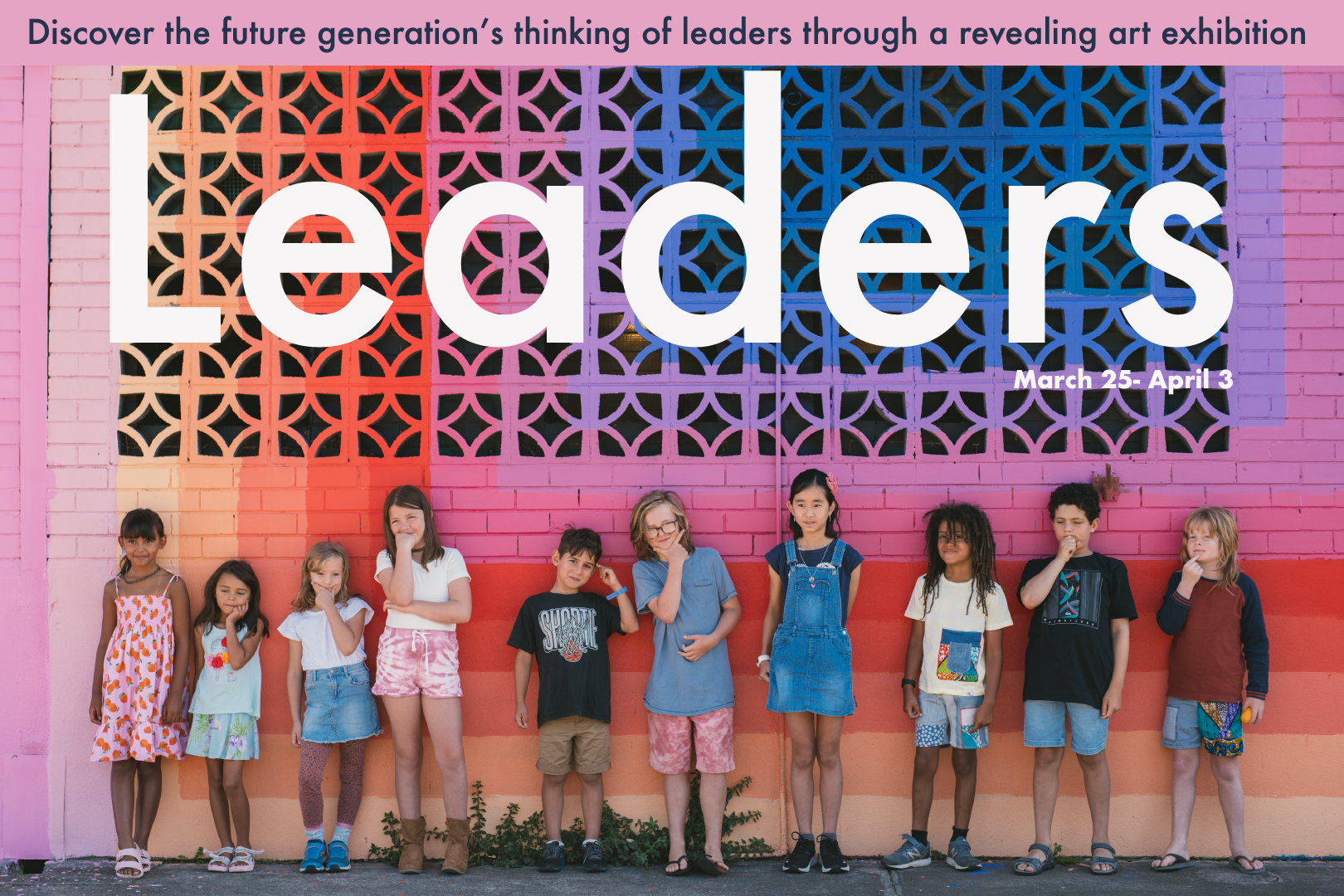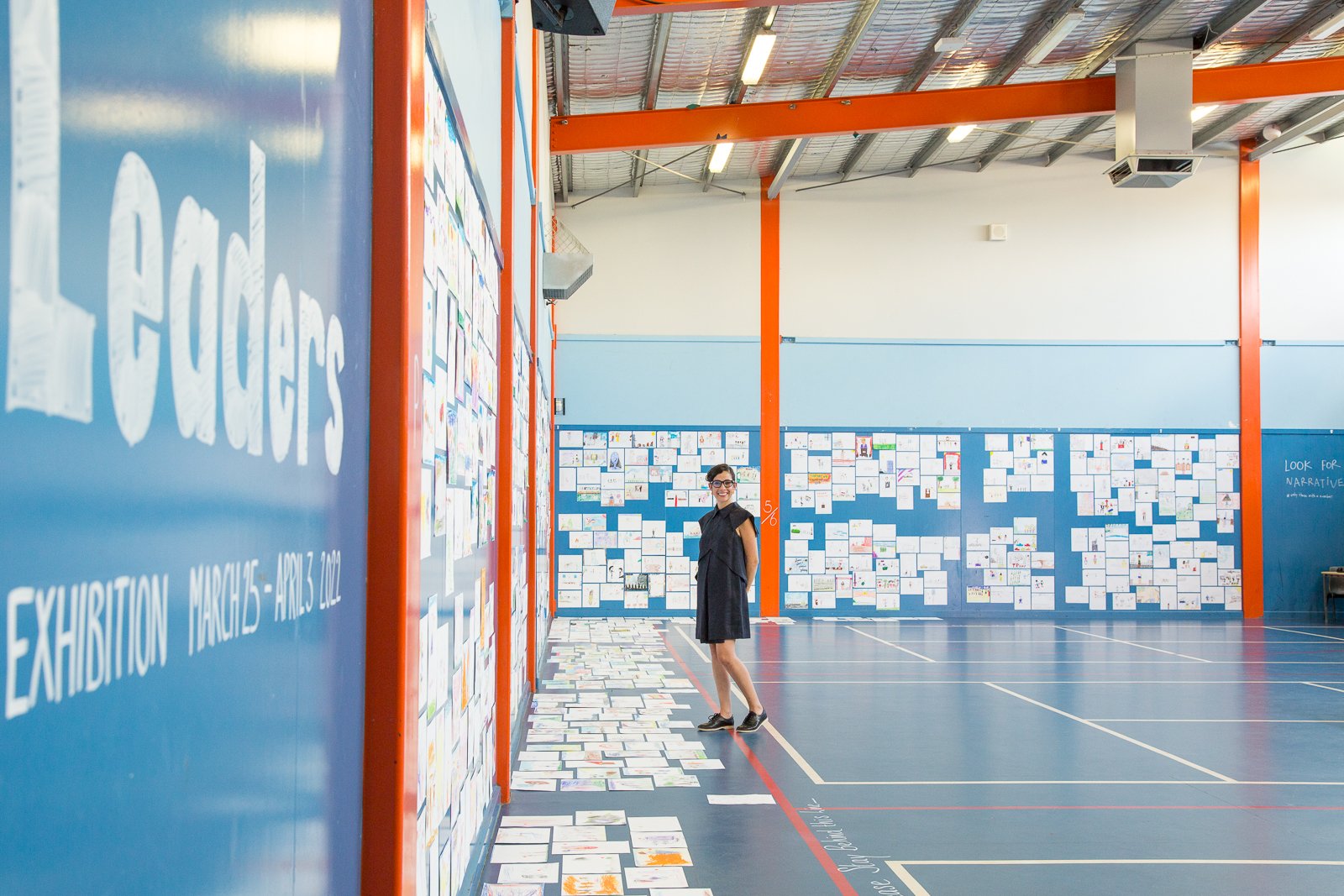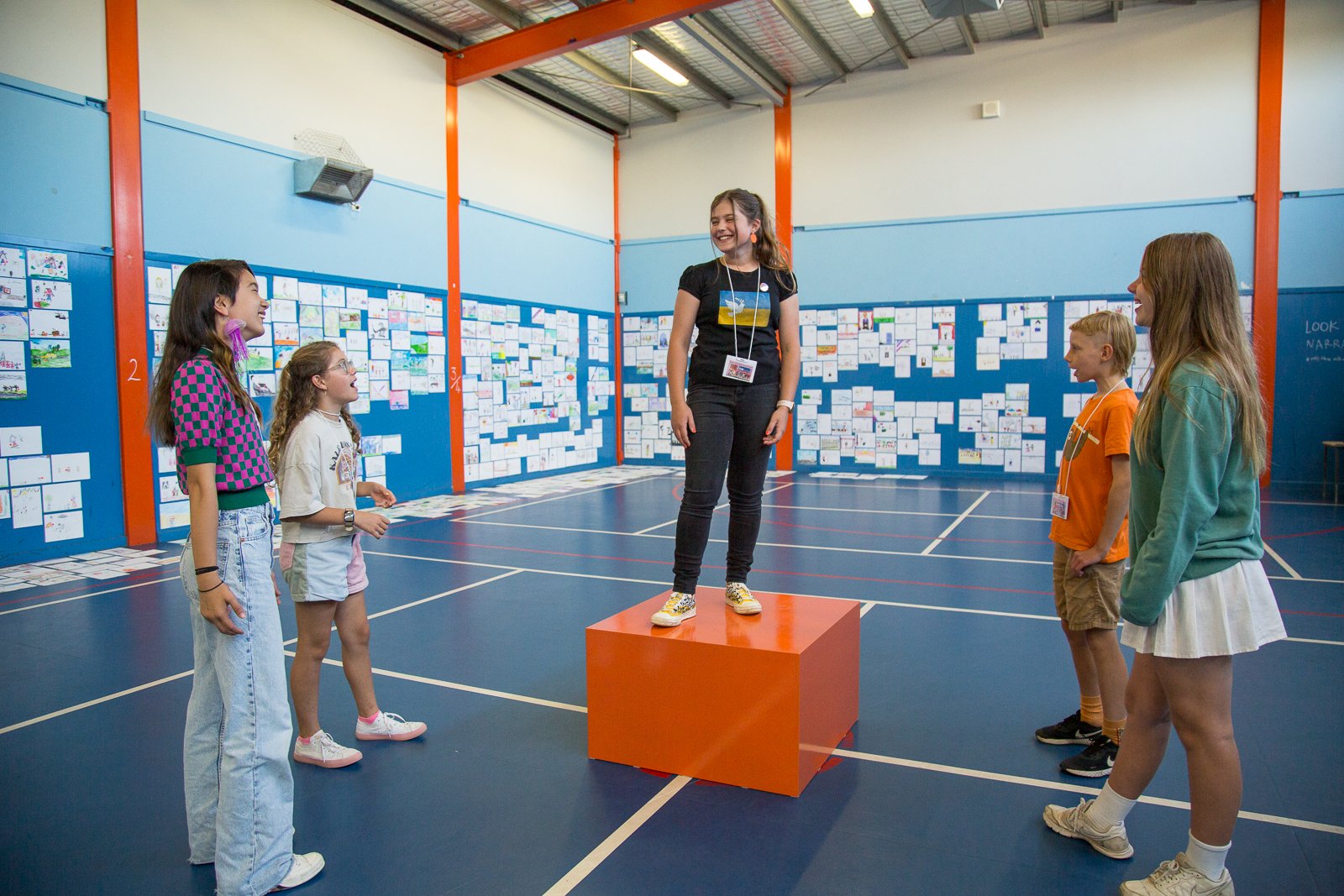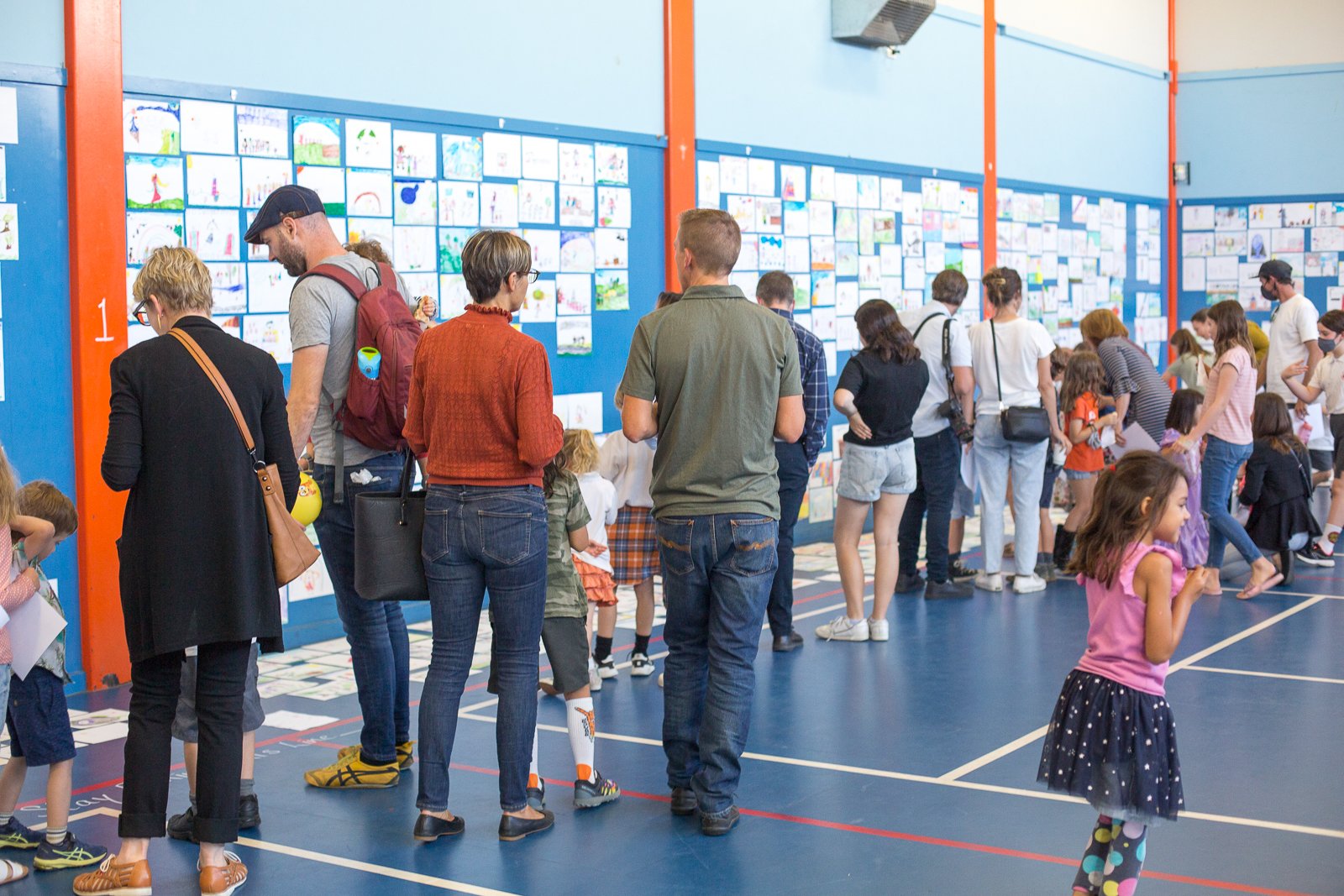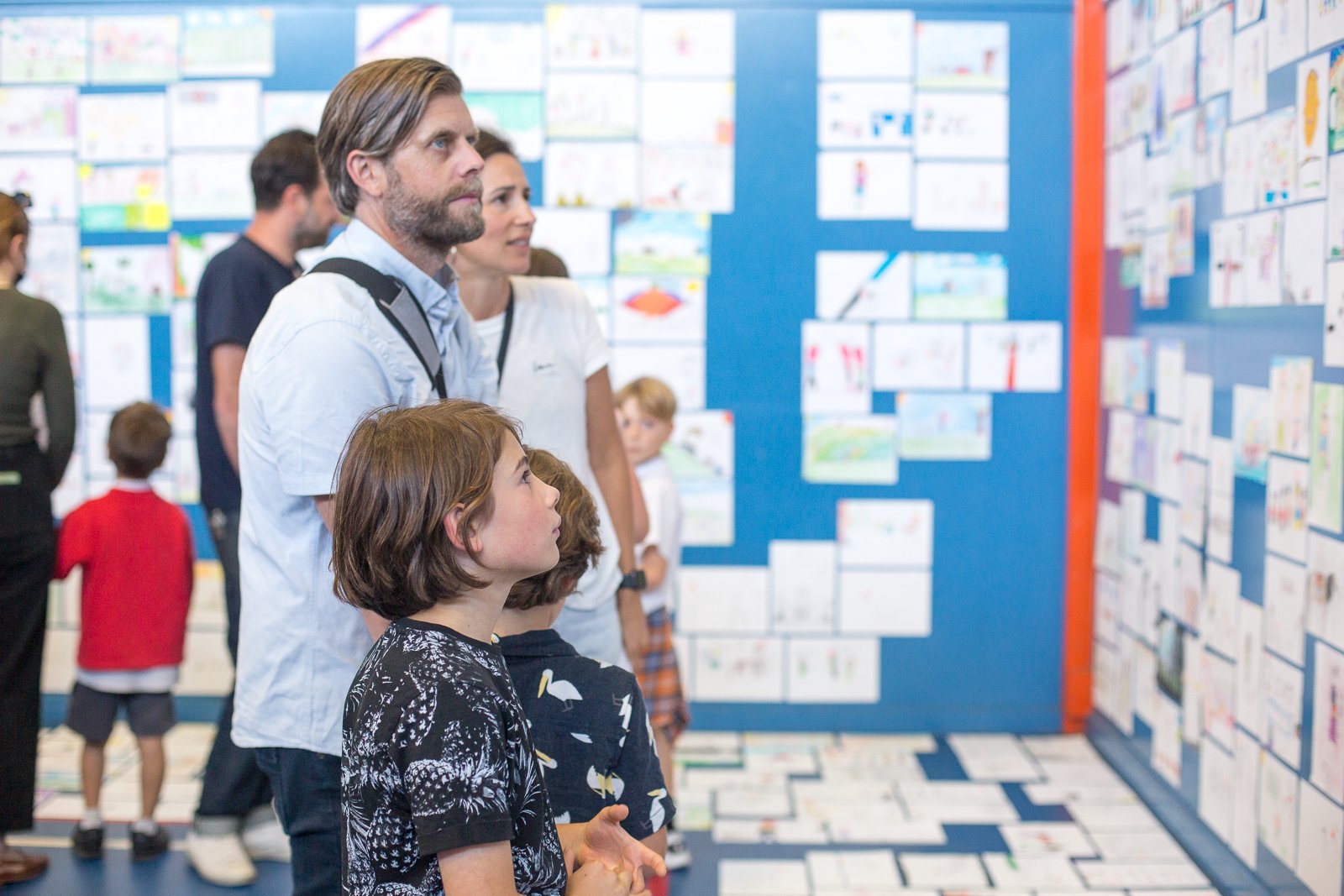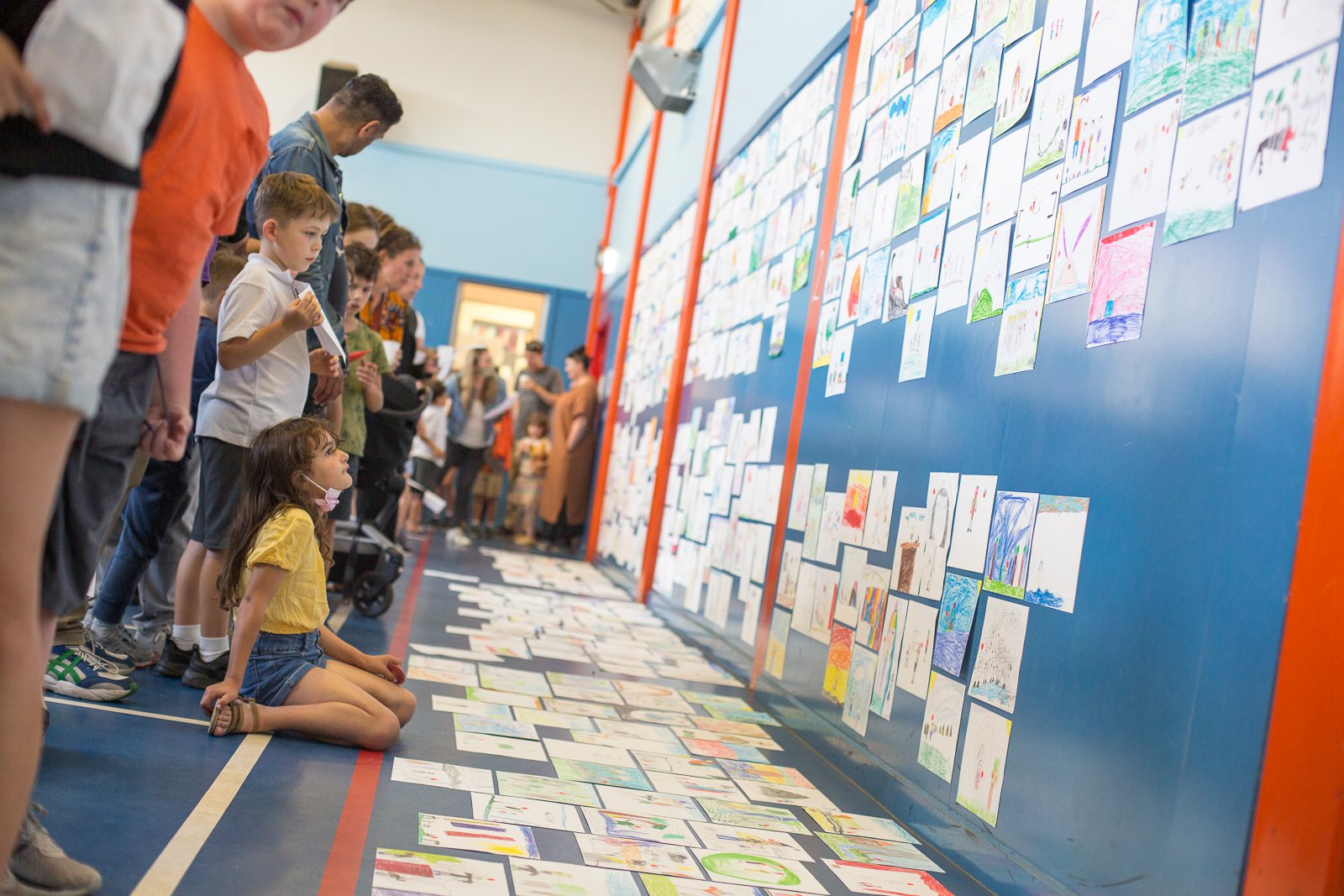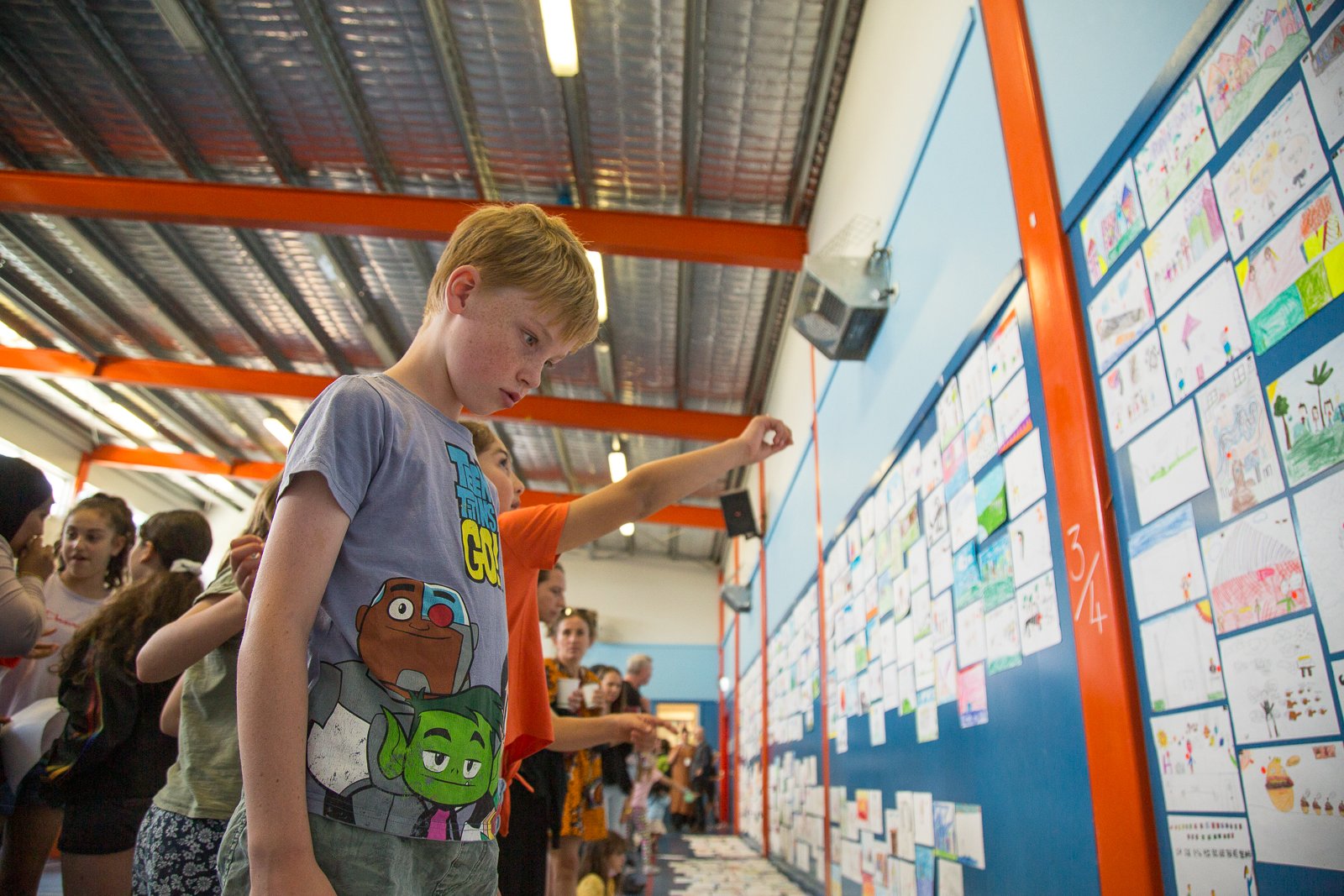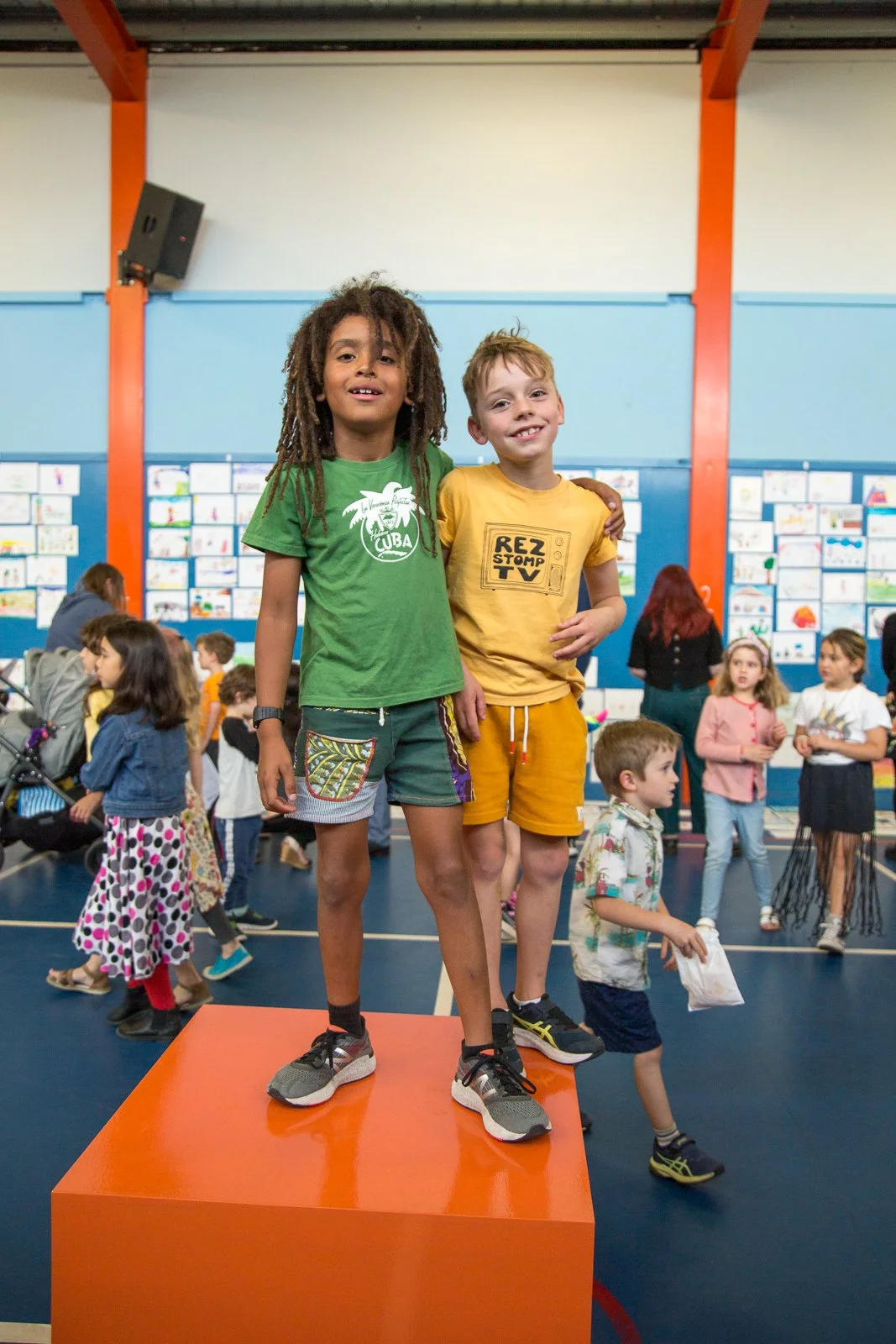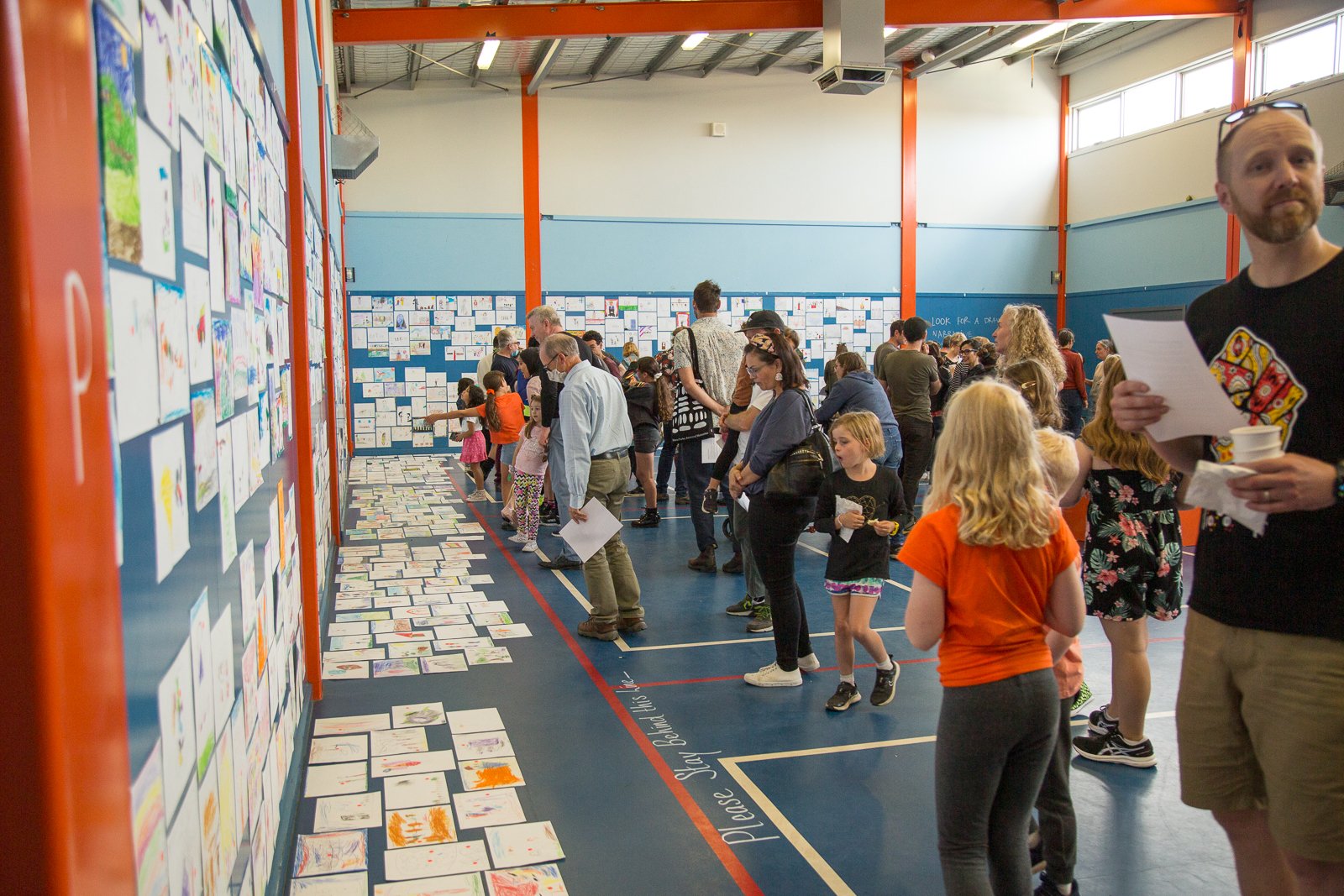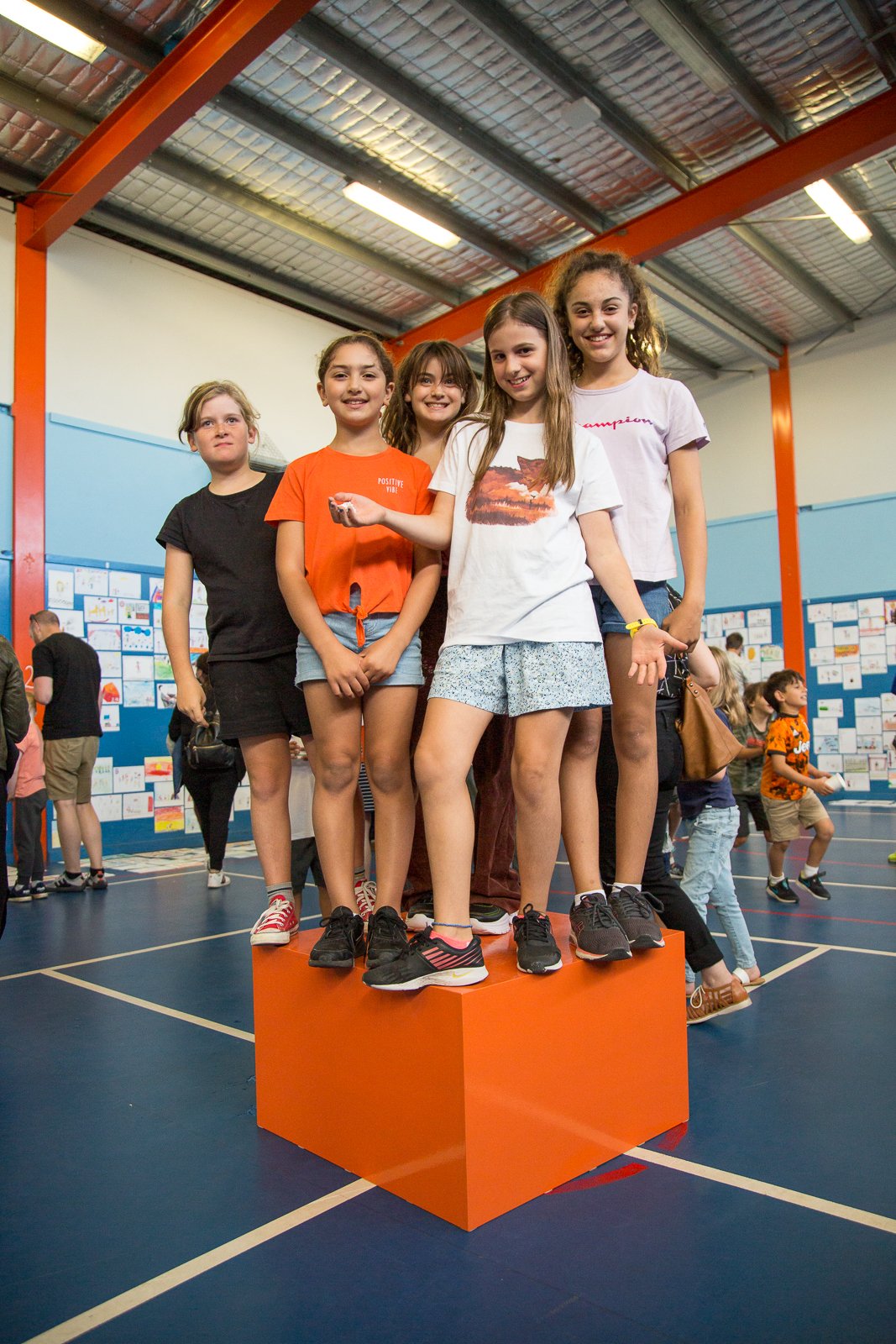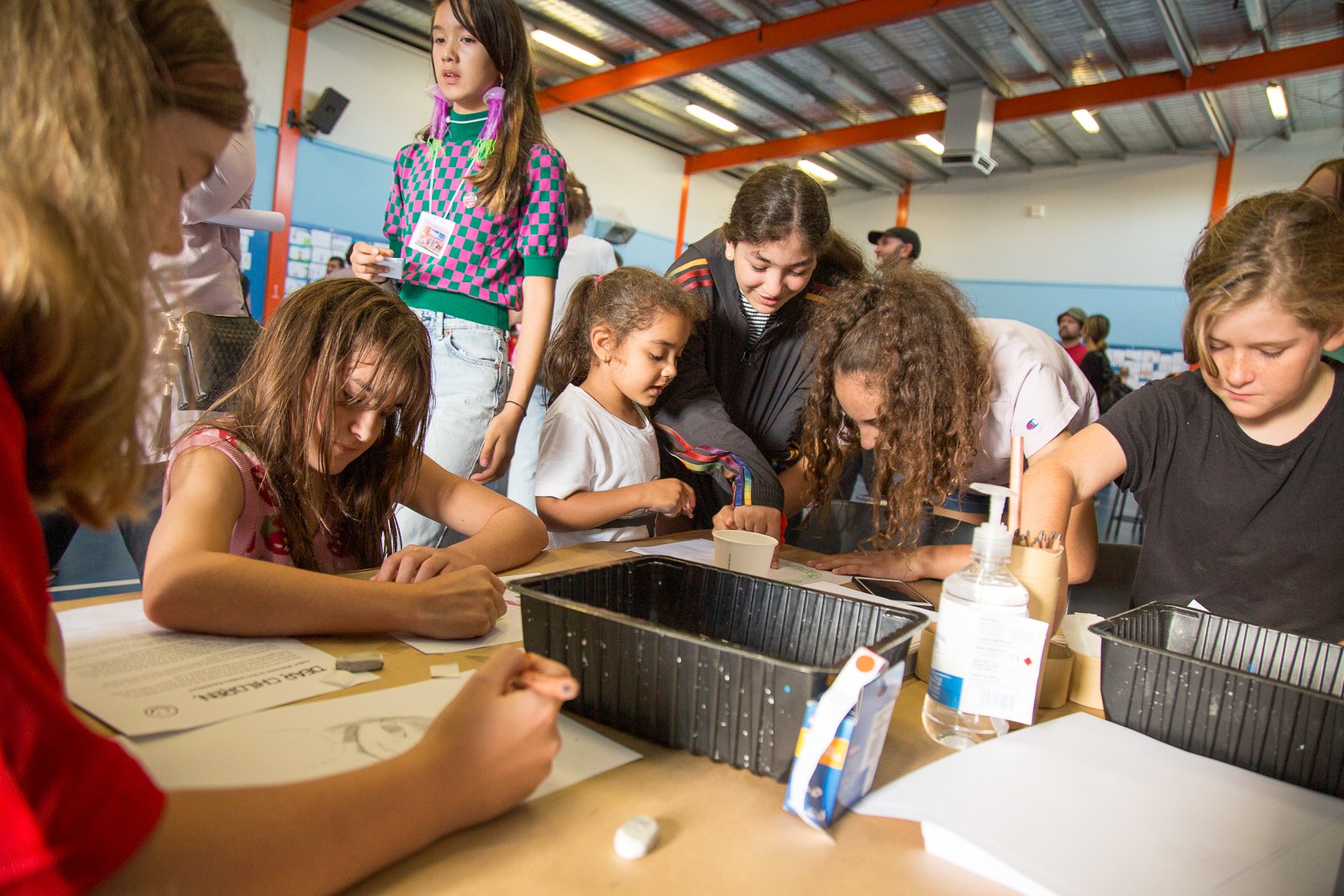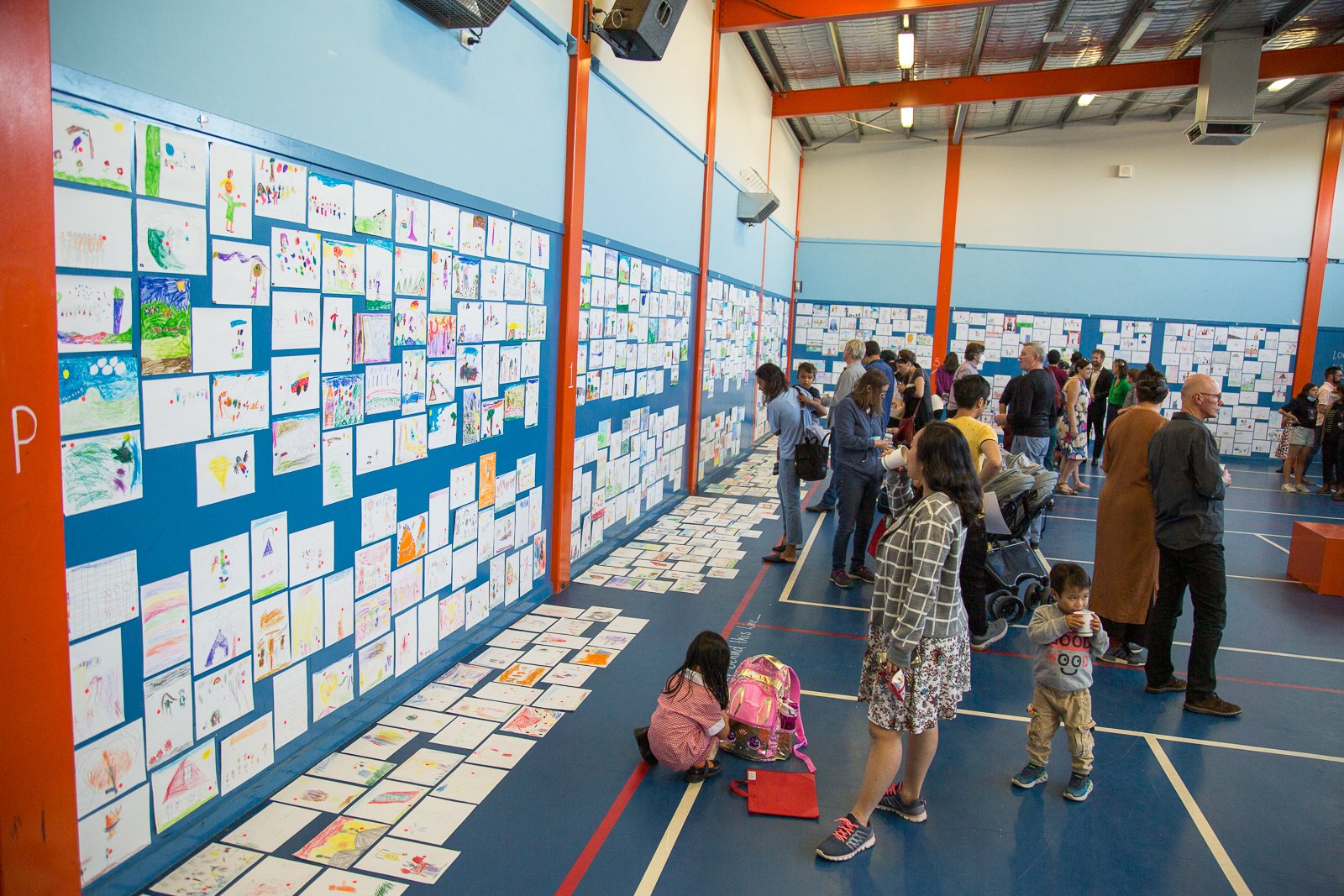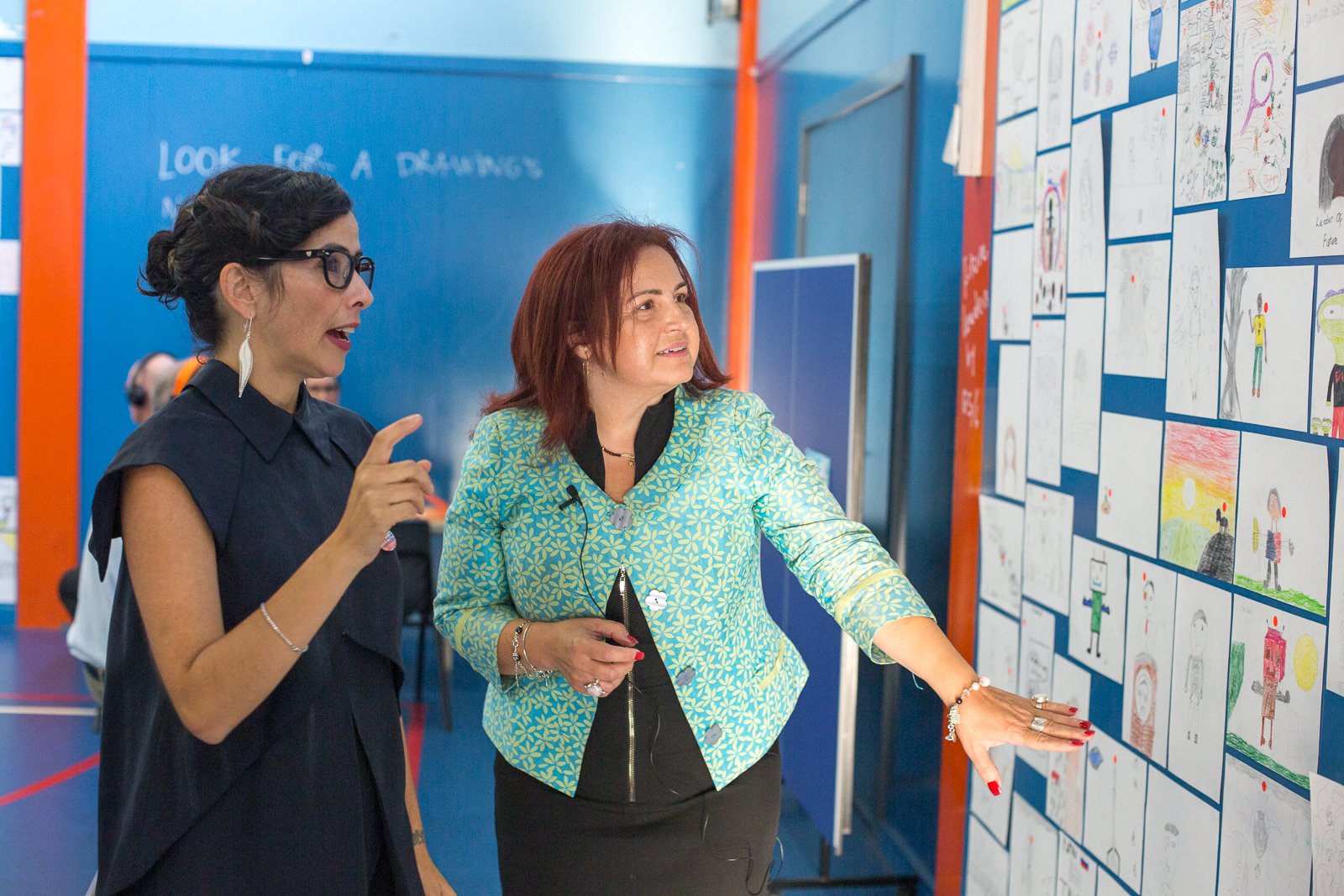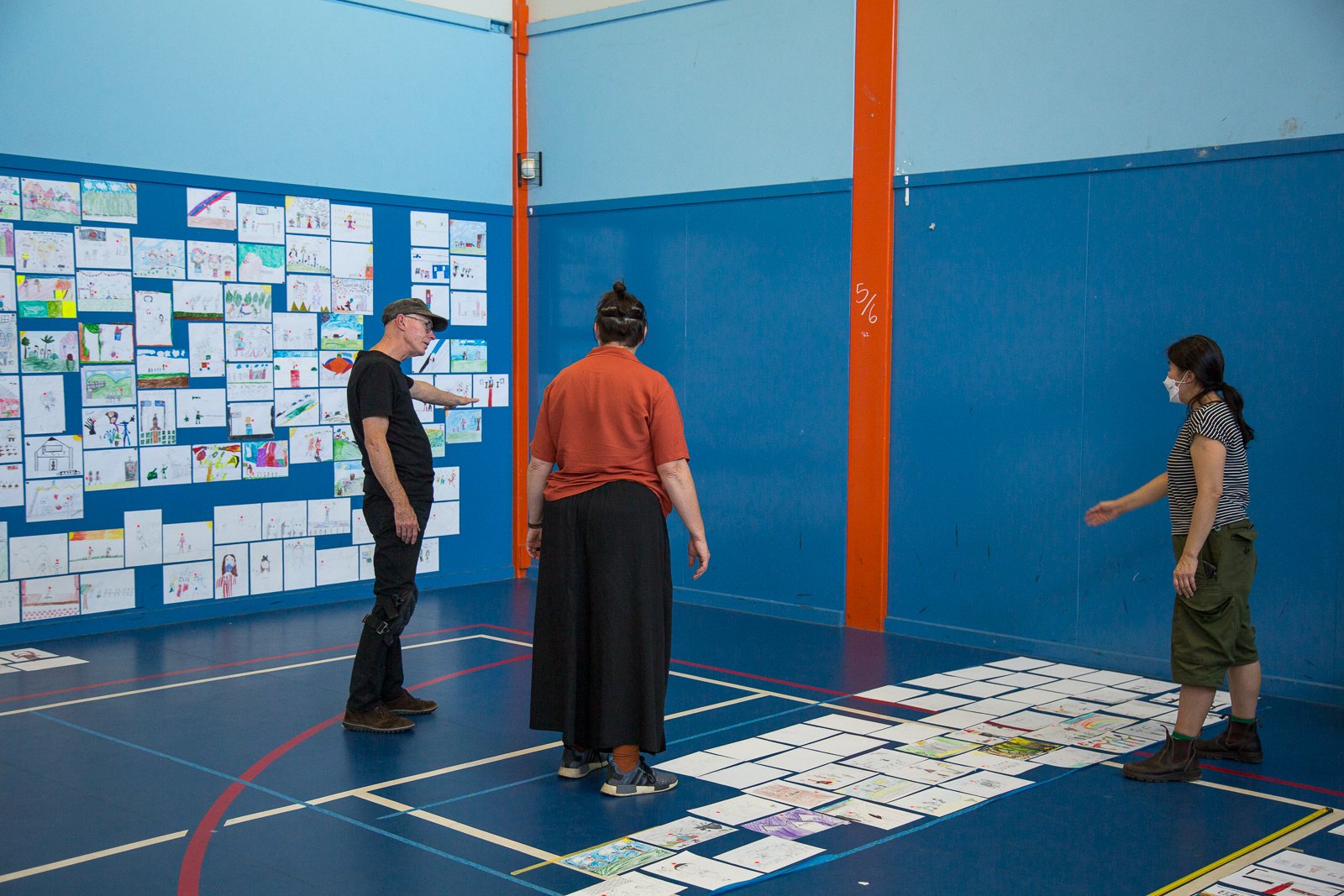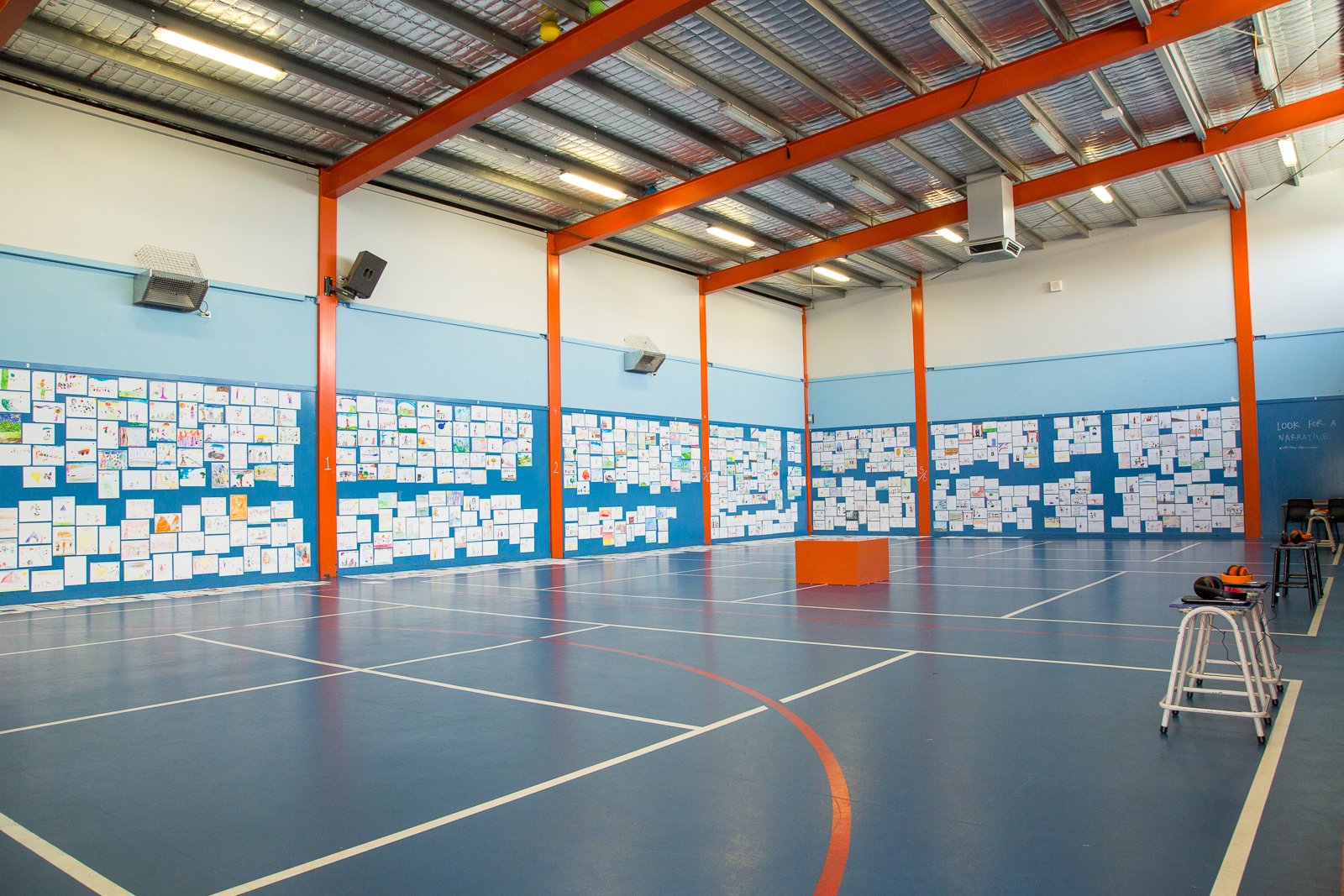Leaders Exhibition March 25- April 3 2022
An immersive journey into children’s thinking of leaders, its development, and its driving forces, expanding our views of what leadership is and can be.
This Australian-first research project and art exhibition asked hundreds of Melbourne children to draw and describe what a ‘leader’ looks like to them, revealing unconscious biases that could potentially be influenced in early childhood.
More than 900 artworks, which were created in pre-pandemic (2018) and pandemic (2022) times by students across all grades, between 5 and 12 years old were on display at Reservoir West Primary School from 25 March to 3 April 2022, alongside spoken narratives from the children involved.
Led by Dr Claudia Escobar Vega (Deakin University) in collaboration with artist and RWPS art, Spanish and music teacher Jorge Leiva, curator Leisa Shelton, and a group of students from RWPS.
Dr Claudia Escobar Vega led this research project with the aim of better understanding how our ideas around leadership emerge in early life and contribute to the development of norms in adulthood, such as the lack of opportunities for women, First Nations Australians, and culturally diverse people. Claudia’s research shows we must have leadership discussions with children earlier.
Interesting findings from this area of research include:
At age five most children already have an idea of what leaders are. During childhood, these ideas are commonly influenced by TV, prominent public figures, movies, Internet, and discourse from family and friends. Leadership moments that have an impact.
Age-groups have a tendency to have similar ideas, however there are exceptions that show us the capacity of children of any age in primary school to have more sophisticated ideas. Tendencies are:
Youngest children have physical and spatial ideas of leadership – fastest, oldest, first in line – but interestingly they were the ones who most likely to draw pictures of themselves. Most primary schools have leadership programs only in higher years, but leadership can, and should, be nurtured from the start. This group is the one where children most often identify themselves as the leader. From then on, they mostly choose adults.
At middle years, children have a functional idea of leader – someone who makes decisions, tells you what to do, knows things.
In later years, children develop socio-emotional and humanitarian ideas about leadership – how leaders make us feel, leaders who are doing something with great human impact. Not always aligned positive feelings or impact though, Trump and Kim Jong Il were both commonly drawn. The Queen was another common subject.
Sophistication relates to being able to combine different strategies (physical, spatial, functional, socio-emotional and/or humanitarian notions). This is a result of children’s experiences of leadership, with leaders, family conversations, and the environments influencing these perceptions.
Gender biases changes over time. Back in the 80s in the US girls mostly drew male leaders, in the 90s that changed to about 70 per cent female representation. In this project, girls drew 70 per cent female and 30 per cent male. For boys it was about 98 per cent male (the 2% is thanks to the Queen). Interestingly, in grade six girls went back down to 40 per cent female representation, potentially, Dr Escobar Vega believes because they are interested in humanitarian leaders but lack visible role models.
Female political leaders were often drawn more amorphously, with a question mark over the face. Whereas older children tended to have a clearer visualisation of what a male leader looked like – a man at podium in a suit.
Only one reference to a First Nations leader
Minimal depiction of games or playing – reality.
The exhibition was proudly supported by the Darebin City Council’s Community Grants Program, Reservoir West Primary School, Artists for Kids Culture, The Wheeler Centre of Books, Writing and Ideas and peopleartpeople.
Talk ‘Children and Leadership’ at The Wheeler Centre of Books, Writing and Ideas
As part of the exhibition, Dr Claudia Escobar Vega presented a talk providing insights into understanding children’s thinking about leaders and the ways that children learn to conceptualise leadership between the ages of five and twelve. For primary school educators, parents, and anyone interested in discovering how their child engages with the world. See the talk here.
This exhibition was the result of an extensive research Project conducted by Claudia Escobar Vega for her PhD in Leadership at the University of Wollongong. The results from her study “Understanding the next generation of leaders: An exploratory study of constructions of leadership during childhood” inform the artwork layout and soundscape. The PhD study was developed between 2016 and 2021 under the supervision of Professor Jon Billsberry (University of Wollongong) and Dr John Molineux (Deakin University) and external advisor Honorary Professor Susan Kay Wright (The University of Melbourne), supported by the Australian Government Research Training Program Scholarship, the Department of Education and Training Victoria, the University of Wollongong, School of Management and Marketing, Deakin Business School and Elite Editing Thesis Write-up Scholarship. With special thanks to Reservoir West Primary School. The thesis can be found at https://claudiaescobarvega.com/research-publications
Photo credit (top): Manda Ford
Gallery: Blacknote Photography
